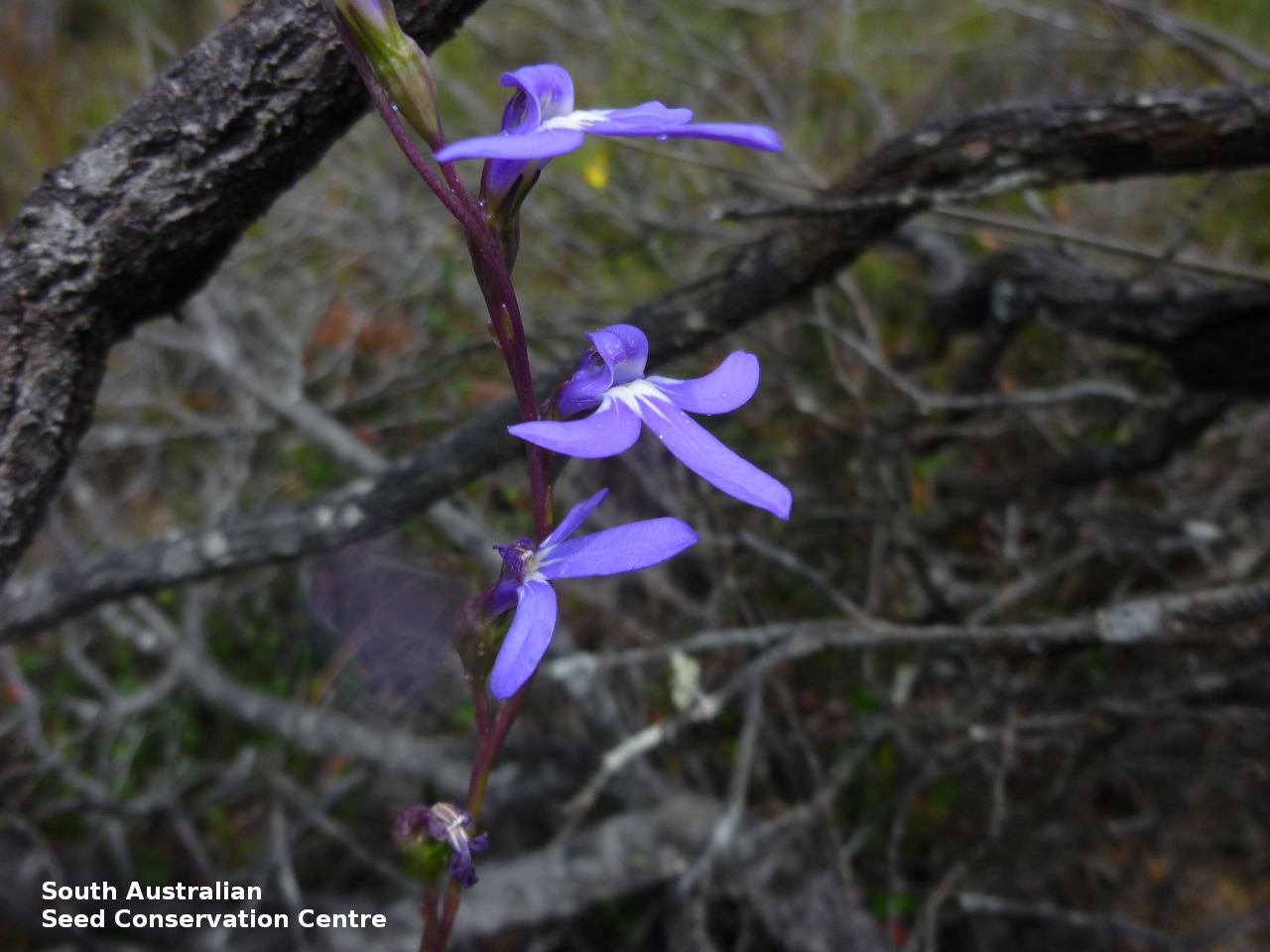
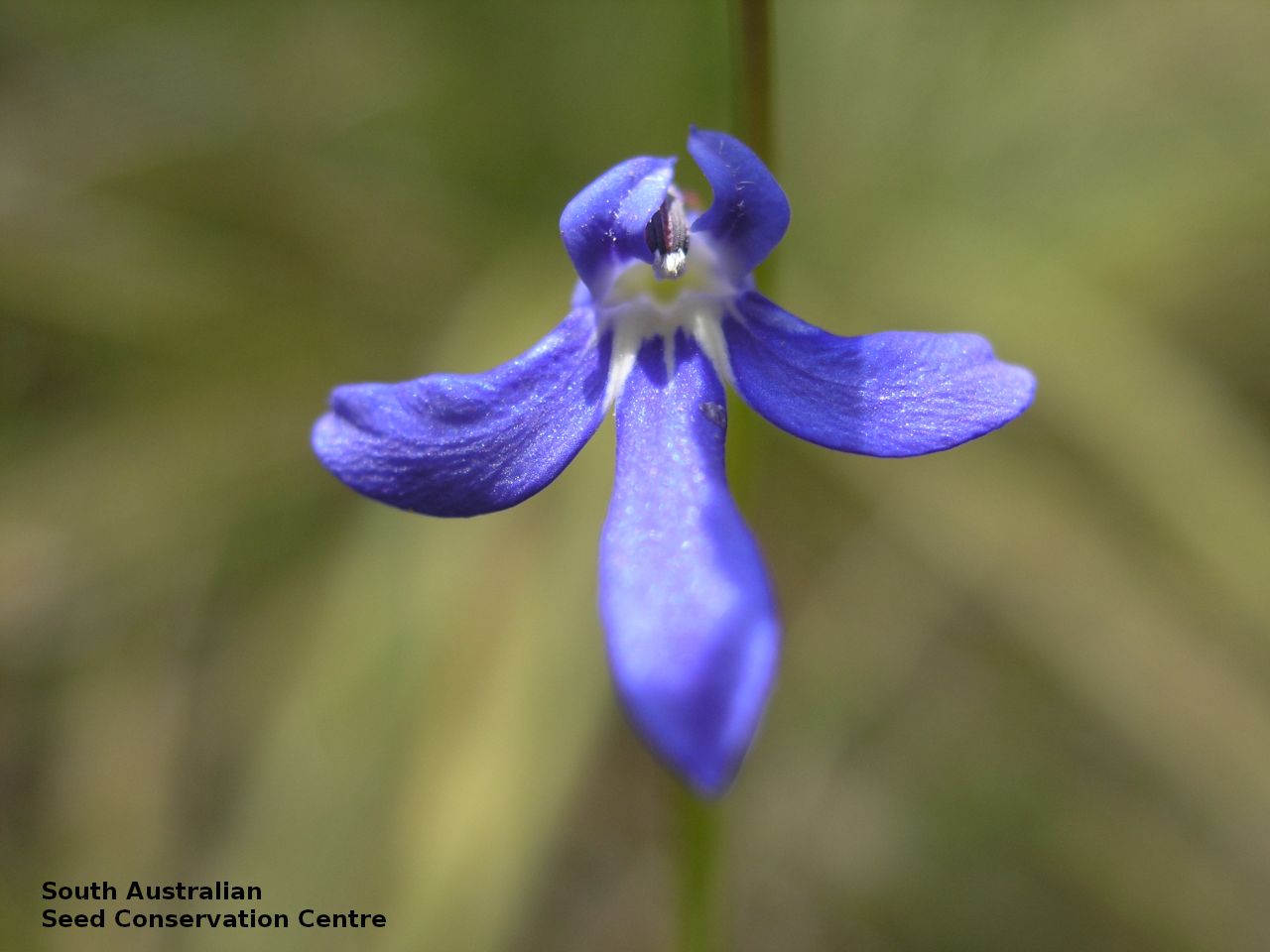
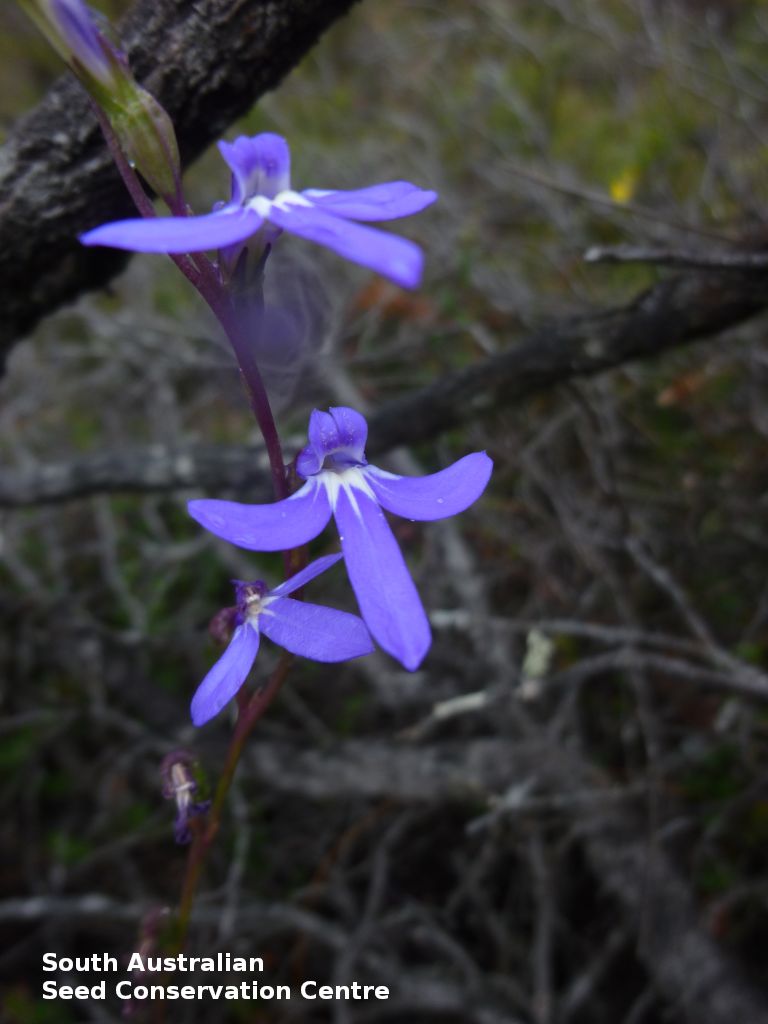
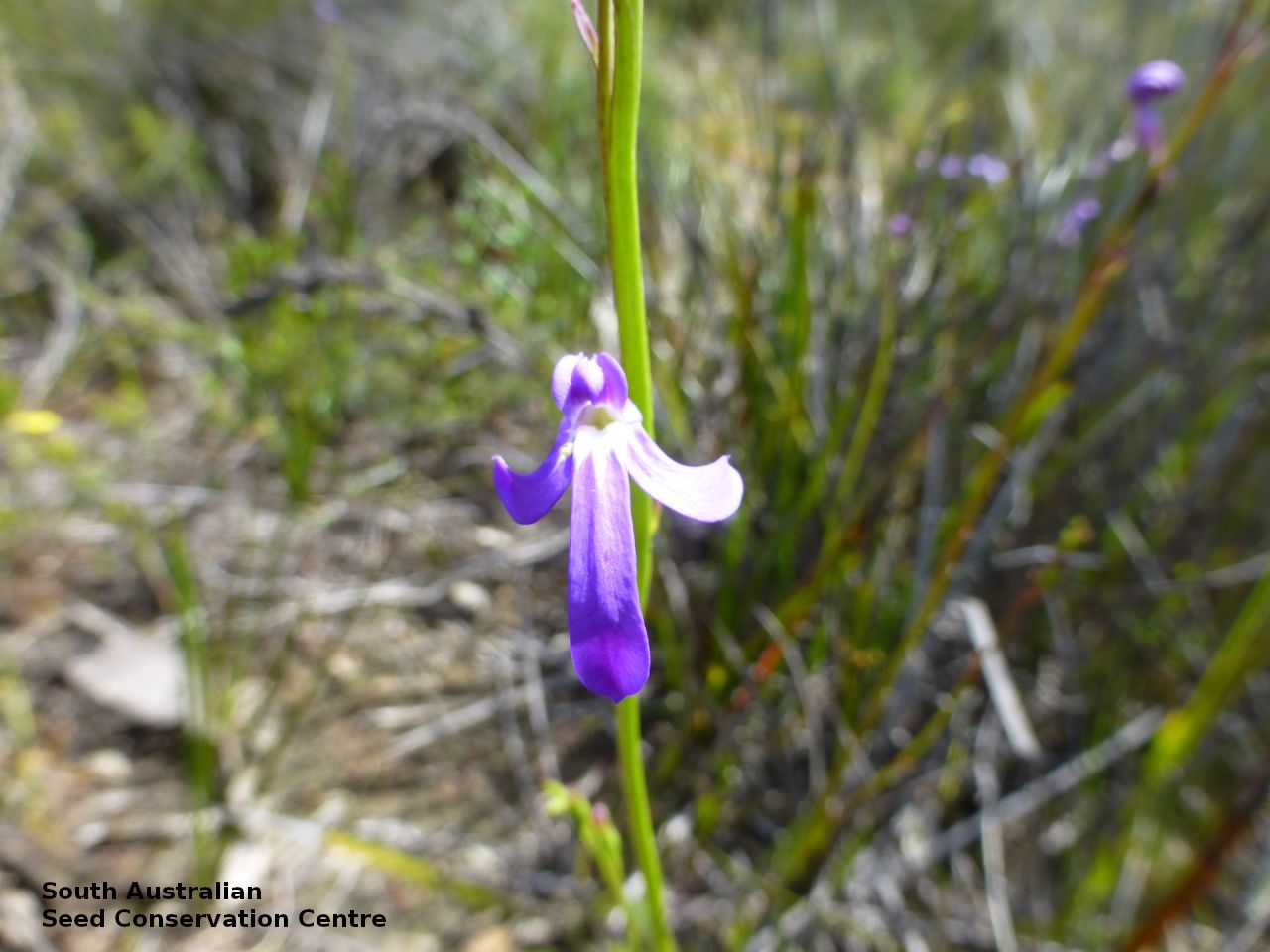
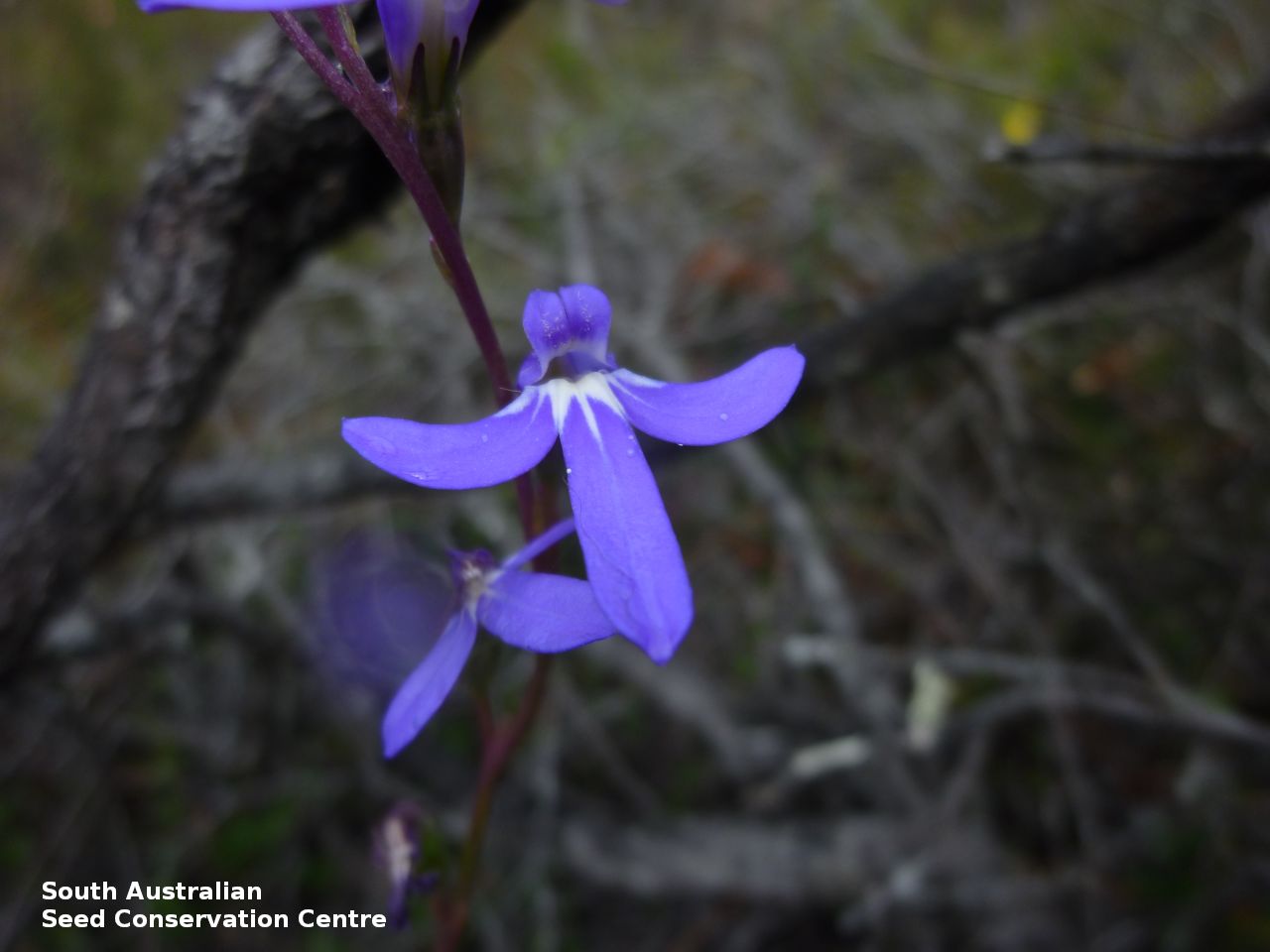
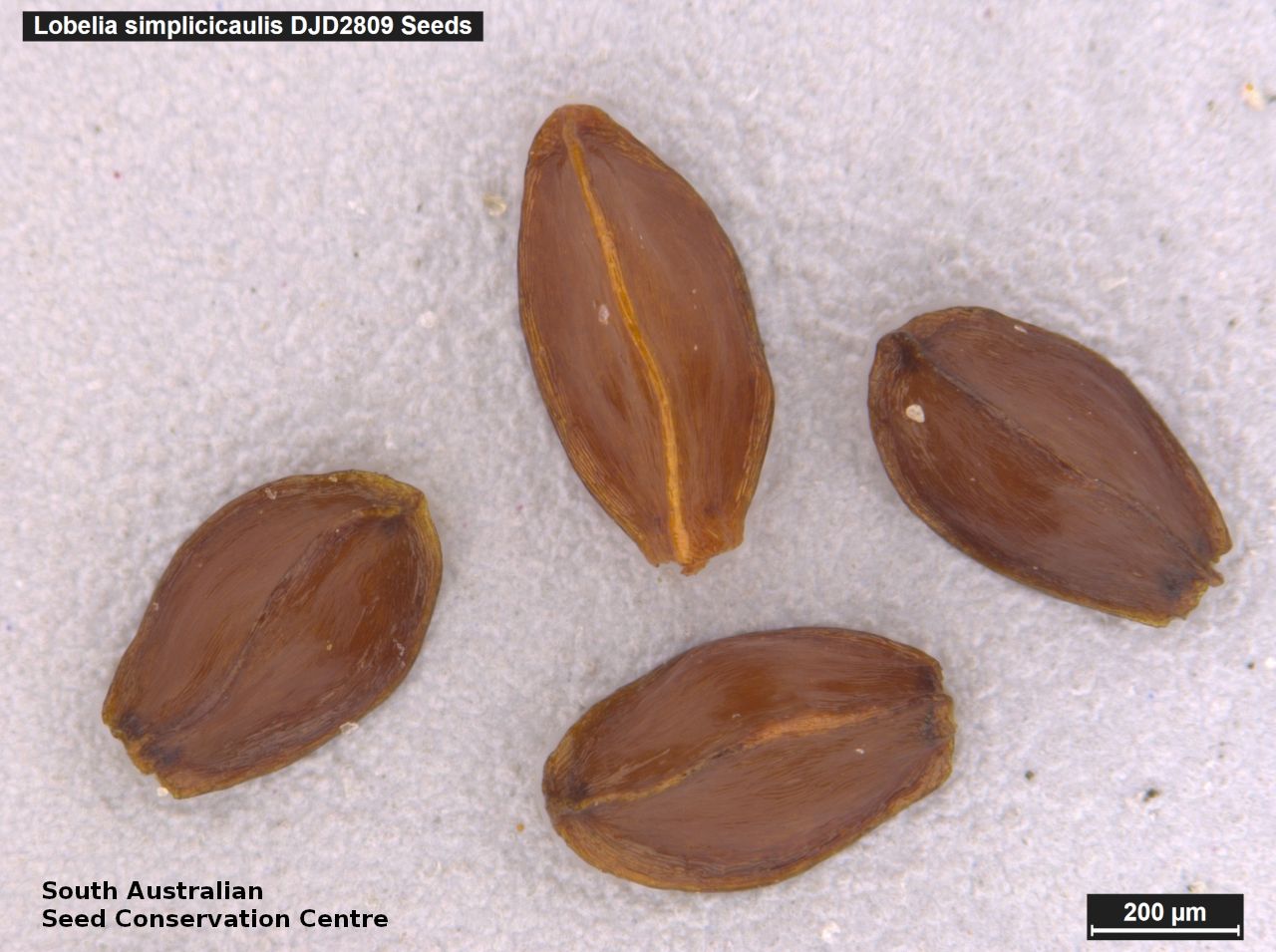
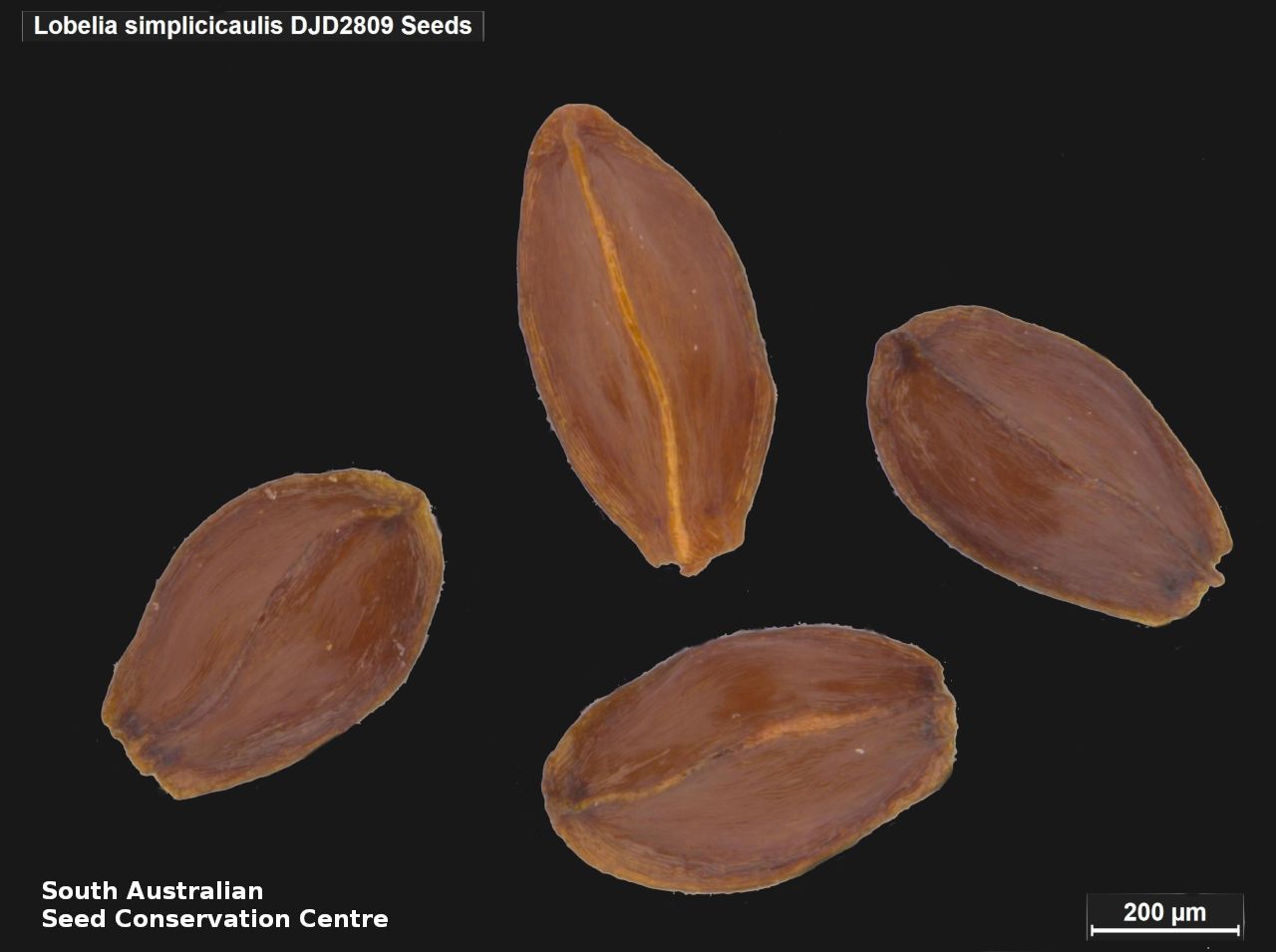


Botanical art
Common names
Narrow Lobelia
Etymology
Lobelia, named after Mathias de Lobel (1538-1616), physician to William of Orange and then botanist to James I of England. Simplicicaulis, means unbranched stem, referring to its single erect flowering stem.
Distribution and status
Found in the South-east in South Australia, growing in the understorey of open forest, ephemeral after fire or other disturbance. Also found in New South Wales, Victoria and Tasmania. Native. Rare in South Australia. Rare in New South Wales. Common in the other States.
Herbarium region: South Eastern
AVH map: SA distribution map (external link)
Plant description
Annual or perennial herbs with a tap root, and one to few stiffly erect stems up to 35 cm long; glabrous. Leaves sessile; linear-oblanceolate with a cuneate base and often distant marginal teeth at the base of the plant but often already dried up by the time the flowers are open, becoming linear-lanceolate to awn-shaped on the stem; 1 to 3.5 mm long, 4 mm wide; glabrous. Flowers along a long spike with blue flowers with lobes triangular; the tube, off-white becoming blue like the lobes and split along the upper side; the upper 2 lobes short,;the lower 2 lateral lobes longer but about half the length of the oblanceolate median lobe. Flowering between November and January. Fruits are brown obovoid capsule to 8 mm long. Seeds are brown triangular seed to 0.7 mm long and 0.3 mm wide; smooth. Seed embryo type is linear ,under-developed.
Seed collection and propagation
Collect seeds between December and February. Collect mature capsules that are fat, turning a pale straw-colour and containing brown seeds. Place the capsules in a tray and leave to dry for one weeks. Rub the capsules gently by hand to dislodge the seeds. Use a sieve to separate the unwanted material. Be careful as the seeds are very small. Store the seeds with a desiccant such as dried silica beads or dry rice, in an air tight container in a cool and dry place.